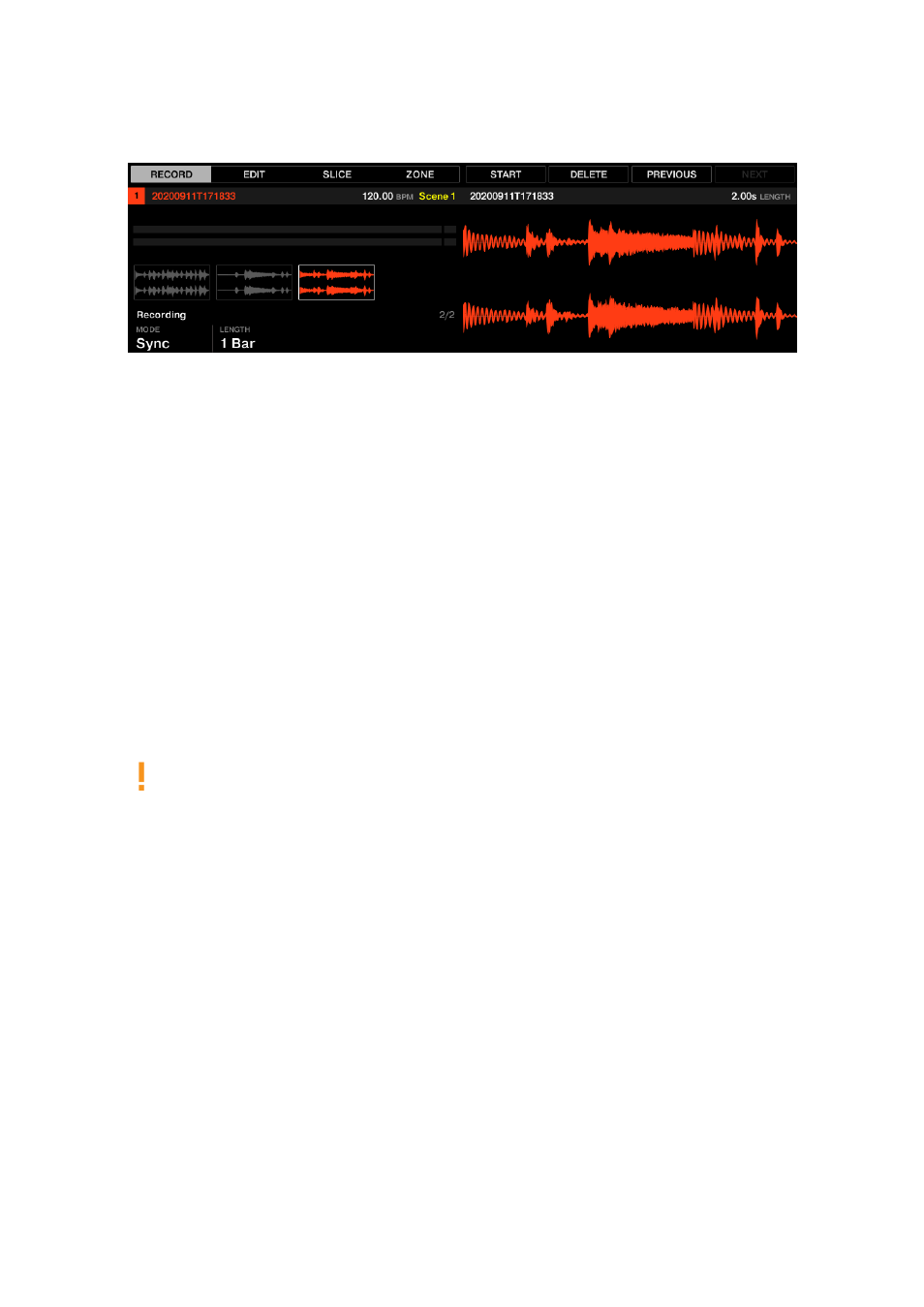Using the audio pool, Location and name of your recorded samples, Location and name of your – Native Instruments MASCHINE+ Standalone Production and Performance Instrument User Manual
Page 193: Recorded samples

The Record page in the Sampler
All the recordings (takes) you have made since you opened the current Project are stored in the
Audio Pool and displayed as mini waveforms on the left display. The following actions are
available:
• To navigate your various recordings, press Button 7 (
PREVIOUS
) and Button 8 (
NEXT
).
• If you are using the Sampler plug-in:
• The selected recording is automatically loaded in the Plug-in and ready to be played.
• You can further edit the selected recording via the other pages of the Sampling mode. When
selected, a recording is also automatically mapped to a new Zone covering the entire key and
velocity ranges in the
ZONE
page. Any existing Zones will be replaced.
• You can press the fully lit pad (the focused Sound slot) to listen to the displayed recording on
the Cue bus.
• If you are using the Audio plug-in:
• The last take will automatically play back.
• You can set the Playback mode, the Engine mode, and Source Tempo and Length.
• Press Button 6 (
DELETE
) to delete the selected take.
All recordings (takes) in the Audio Pool are saved with the Project. When you close the
current Project, all of your takes are saved as audio files and available for later use unless
you explicitly delete them.
Using the Audio Pool
Location and Name of Your Recorded Samples
By default, recorded Samples (takes) are saved in the Recordings subfolder of your SD memory
card:
Native Instruments\Maschine2\Recordings
. You can access them when using
MASCHINE+ in Storage mode. For more information on Storage mode, see
.
Recorded Samples are automatically named using the following scheme:
[YYMMDD]T[HHMMSS]
.wav
In the name above, [
YYMMDD
] stands for the current date (year, month, day, all 2-digit numbers)
and [
HHMMSS
] for the current time (hours, minutes, seconds, all 2-digit numbers).
SAMPLING AND SAMPLE MAPPING
186
